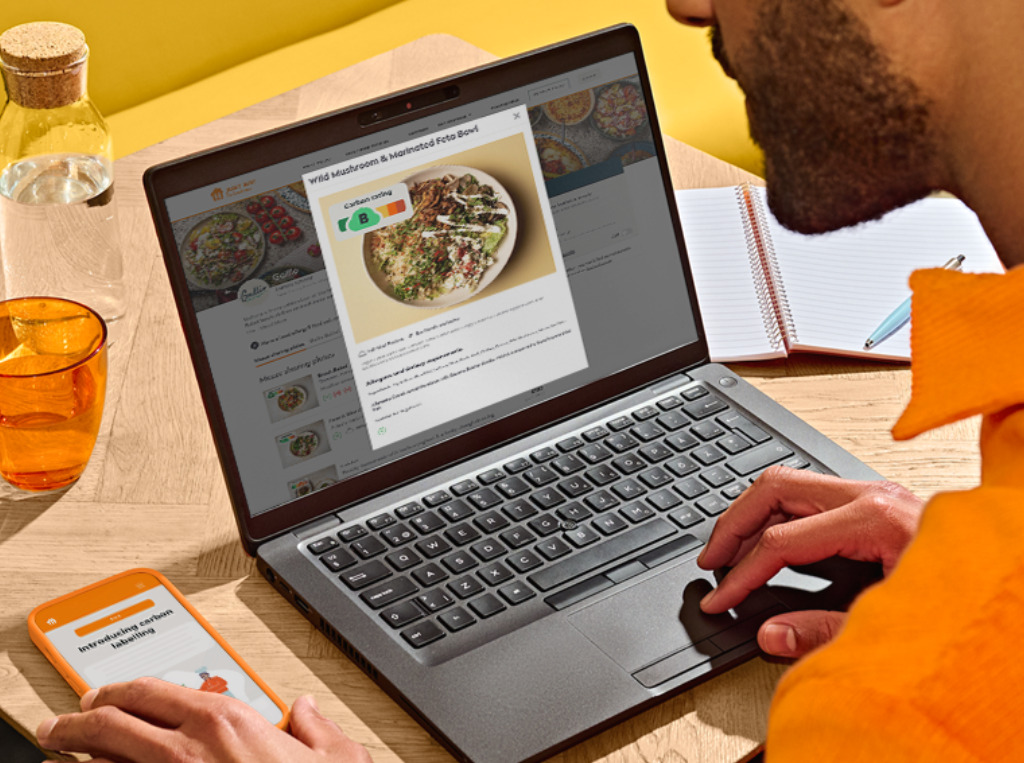Meet the Startup Helping UK Restaurants & Food Brands Calculate Their Carbon Emissions
8 Mins Read
Matthew Isaacs, co-founder of UK emissions calculator and carbon labelling startup My Emissions, talks to Green Queen about the company’s pivot from recipe blogs to restaurants and food manufacturers, how it measures a product or dish’s carbon impact and successful case studies.
What started out as a tool to attach carbon labels on online recipes, a “lockdown project”, as co-founder Matthew Isaacs calls it, My Emissions, a UK carbon labelling startup has expanded far beyond recipes blogs. “At first, Nathan [Bottomley, his co-founder] and I wanted to reduce our own carbon footprint, and working with food blogs and recipes was a great MVP for us to build.”
“We quickly realised that food companies hold the key to emissions reductions. We saw the parallel with nutrition labelling and calorie counts and the direction of travel with regulation,” recalls Isaacs. “We’re now working with over 75 different companies and engaging with Defra’s [the Department for Environment Food and Rural Affairs] project to standardise environmental reporting and labelling in the UK, which justifies the decision.”

The importance of carbon labelling
Carbon labelling has origins in the UK, dating back to 2006 when the Carbon Trust launched the first-of-its-kind Carbon Reduction Label. Perhaps the most notable example of its initial use was Tesco, the country’s largest retailer, which adopted the label in 2007 – only to walk it back five years later owing to increased costs and a lack of interest from other businesses.
But emissions labelling is a matter of fierce debate now, with many calling for them to be made mandatory. My Emissions is part of a growing list of companies, including the likes of CarbonCloud and Planet FWD, that are helping businesses adapt to this shift by calculating GHG emissions and labelling their products accordingly to be more transparent to consumers.
“The purpose of My Emissions is to help people (and businesses) access data to reduce their carbon footprint as quickly as possible. This continues to give us our point of difference today,” explains Isaacs. “Our main benefit is the quality of our insights, which help clients instantly understand and reduce their emissions. Speed is also crucial – when we start working with clients, we want to deliver those insights as quickly as possible so they can start building momentum.”
“Customers don’t expect companies to be perfect, but they do expect them to be honest and to be trying to be better,” says Elin Roberts, co-founder and chief marketing officer of tempeh company Better Nature, which has been working with My Emissions since May 2022, opting the service for its thorough approach and finding it to have the clearest label.
Roberts says her greatest takeaway from the collaboration is finding out just “how much customers appreciate transparency”. “After working with My Emissions for about a year, we started making some of our products in a new factory, which unfortunately brought down their carbon rating (from A to B – very low to low), which we were really disappointed by and are trying to fix as soon as we can,” she explains. “However, our customers were really understanding and just appreciated the transparency.”
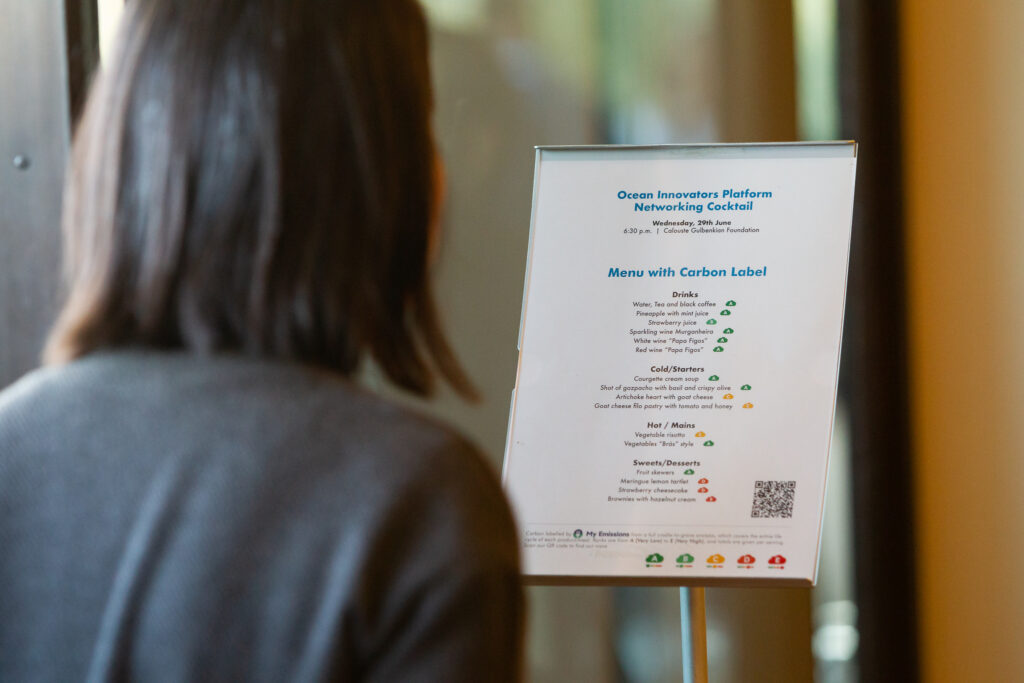
Isaacs adds: “Our clients always tell us they love using our carbon label. We’ve spent a lot of time thinking about how to make it as engaging as possible, and something people can instantly ‘get’. In many ways, we’ve modelled it on the B Corp certification, and designed it so it gives our clients a meaningful point of difference for their brand.”
My Emissions measures the total GHG emissions of restaurant dishes and food products to issue a carbon intensity score, measured by emissions per kg of food. “The carbon intensity number is then converted into our letter rating system from A (Very Low) to E (Very High), making it easy to understand.”
How My Emissions calculates GHG emissions
There are many factors to consider when calculating food emissions, which account for a third of all global emissions. “We measure emissions from farm to store, including all emissions from farming, processing, packaging and transport. Retail, consumer storage and transport, cooking, and end-of-life emissions are not currently included,” notes Isaac.
“We chose this system boundary because it covers the majority of a food’s carbon footprint, whilst relying on as few assumptions as possible – for example, how long a product is stored in a household fridge. It’s also intuitive to communicate the emissions of a product at the point it is purchased by a customer.”
As for which databases it obtains this information from, Isaacs says the startup uses “leading emissions databases” like Ecoinvent, and specific Life Cycle Assessments that follow ISO 14040 standards. “We work closely with our research adviser, Angelina Frankowska (University of Cranfield), to ensure our database is always up to date with the latest research,” he adds.
“We collect as much primary data from our clients as possible – for example, energy data from manufacturing or detailed distribution data. For our enterprise clients, we collect this data from suppliers and, in some cases, look to the farm level as well.”
He stresses that generally, what food you’re eating is more important than where it’s sourced from or how it’s grown. “Our database currently focuses on European values, but we’re actively working on making our database more specific, [such as] building out our dataset for the US and Canada.”
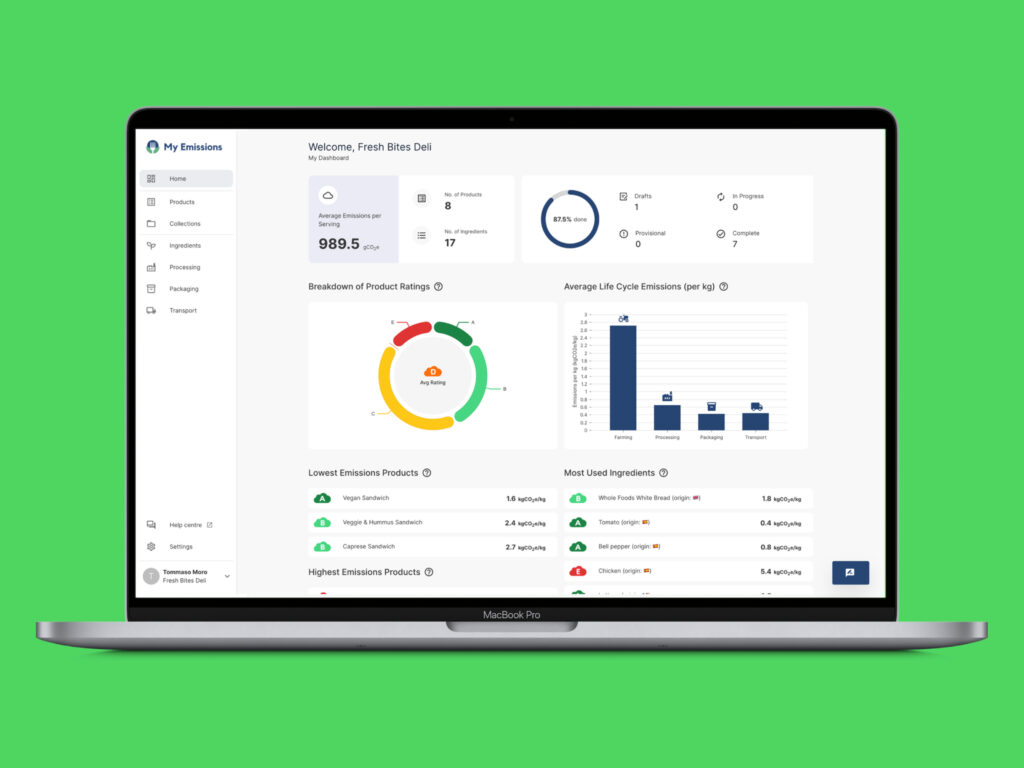
My Emissions uses the same methodology for both foodservice dishes and CPD food products. “We strongly believe that there should be consistency across the sector,” says Isaacs. “The main difference between the assessments is the detail we go into. For products, we get full transparency of ingredients and their origin, manufacturing, packaging and delivery to at least the distributor or warehouse. All of this is modelled in our platform.
“By contrast, restaurants often have lots more recipes but less detail on them. For example, they won’t necessarily know where food comes from (just which supplier they purchased it through), and not how it was processed. We can collect this information, but usually, it relies on engaging with the supplier themselves and treating them as a product in our system.”
He adds: “It’s exciting to see that we already have cases where products we’ve assessed are used by some of the restaurants we work with, improving data quality.”
Case studies for My Emissions
My Emissions already has a collaboration portfolio of 75 brands and restaurants, including Better Nature, the FSC Group, THIS, WNWN Food Labs, Camile Thai and, most recently, Just Eat. With UK plant-based meat maker THIS, for example, it measures and compares the emissions of its products with conventional counterparts. And with the FSC Group – which manages café offerings for companies like Waterstones, Dunelm and Shell – My Emissions has assessed over 250 products and is working to help reduce their climate impact and introduce carbon labelling.
The startup works with smaller brands too, such as artisanal vegan cheese maker Honestly Tasty. “After assessing all their products, we identified nuts as an emissions hotspot, and, in particular, the cashews in their ‘Herbi’ cheese,” says Isaacs. “We helped identify a low-carbon alternative ingredient that’s reduced the emissions per product by 65%, moving it from a C to an A carbon rating. Even better, the product is now cheaper to make.”
Asked if working with My Emissions brought about any tangible benefits for Better Nature, Roberts says: “It’s been helpful to demonstrate our commitment to sustainability to our customers and build their trust. However, as a business our main focus is creating the healthiest meat-free options on the market, so it’s not been as influential to our messaging/positioning as some other sustainability-focused brands.”
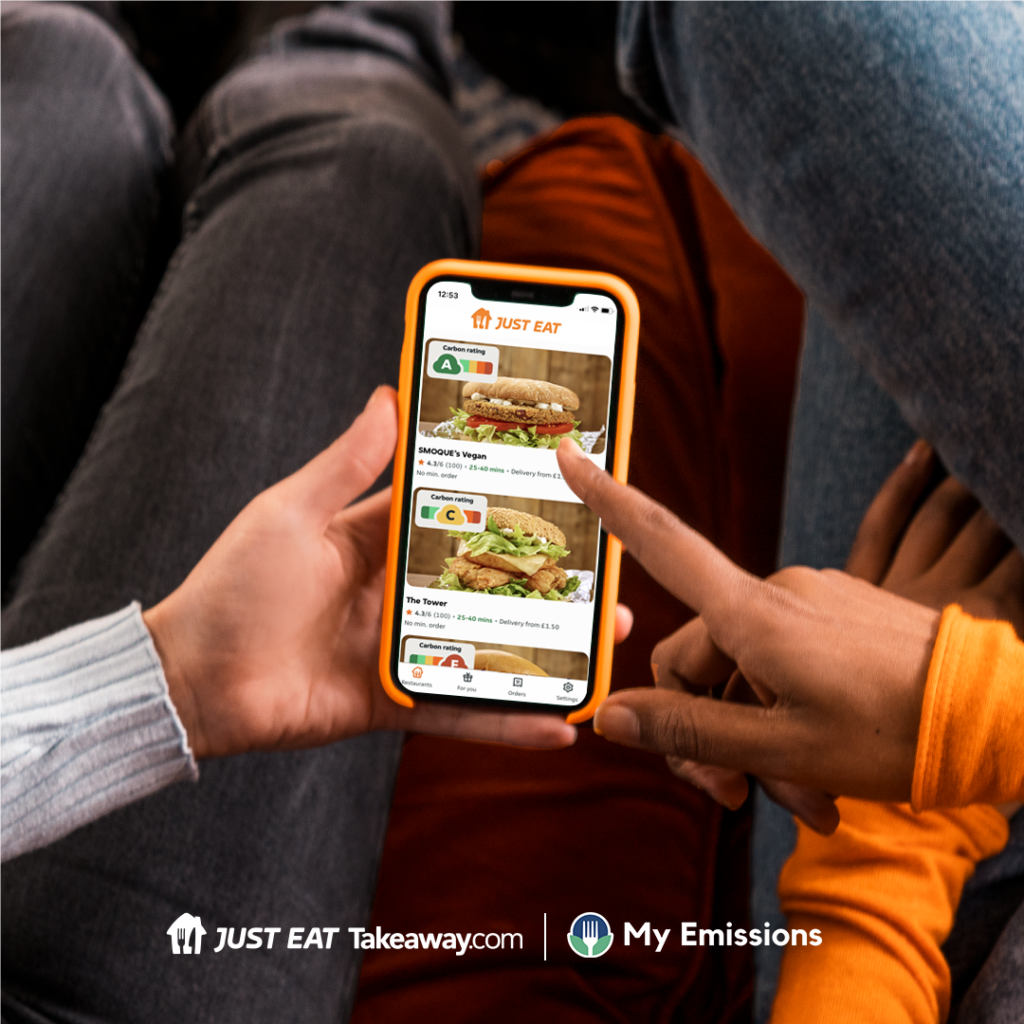
With Just Eat, a partnership that’s just a month old, the company will work with 12 restaurants on the food delivery app to add carbon labels to their dishes. And UK restaurant Camile Thai is said to have become the country’s first chain to adopt carbon labelling on its menu.
The timeline of assessing a product or dish depends upon how quickly companies can gather the data required and the size and scope of the project. Once the data is available, it can be “a matter of days to get meaningful insights and results”, but if suppliers or manufacturers need to be consulted, or data collected for a larger number of products or dishes, it can turn into a longer process. “We recently updated our platform so clients can add products directly into their accounts,” says Isaacs. “This is already slashing our turnaround time, and is a vital stepping stone in reaching instantaneous results.”
He reiterates the importance of carbon labelling and emissions data when talking about the challenges brands face initially with the process: “When onboarding clients, we still find they are surprised to learn that it’s their ingredients that contribute the most to their carbon footprint, rather than more ‘visible’ things like packaging and transport.”
Business model and fundraising
In terms of its own challenges, My Emissions says the biggest obstacle is the sheer size of the food industry. “Food has one of the largest impacts on the environment and impacts everyone in the world on a daily basis. Our challenge is trying to find the best opportunities to make a meaningful contribution to reducing food’s carbon footprint,” he says.
My Emissions employs a subscription-based model for its clients, which starts from £780 a year for up to five products or 50 dishes. “Prices then scale based on the number of products assessed, features unlocked and scope of work. We generate specific proposals for our enterprise clients, which often involves managing the project, supplier engagement, and checking all results and comms,” explains Isaacs.
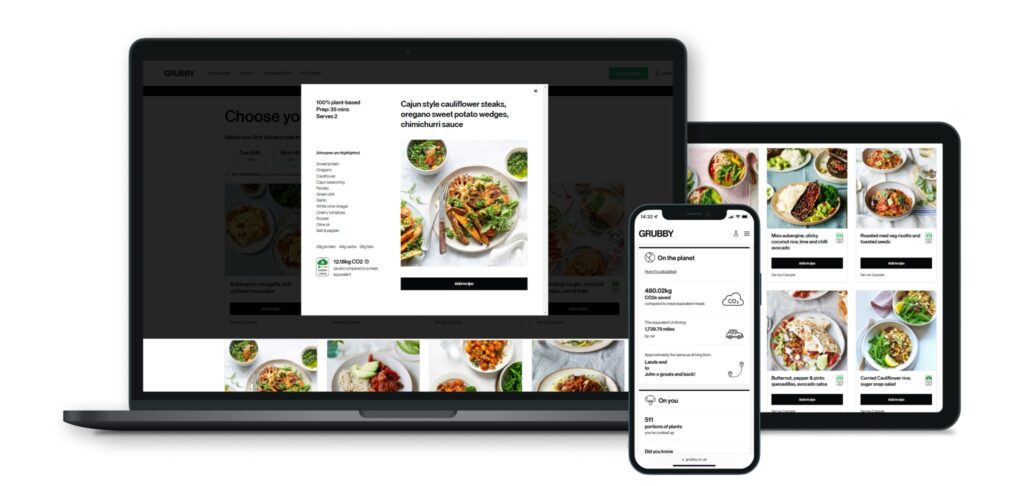
In May 2022, the company raised £400,000 ($485,200) in funding to bring total investment to £550,000 ($667,170). This allowed My Emissions to scale its team and build its product, and now, the brand is close to profitability, which is what has allowed it to continue growing without additional funding.
In 2021, Unilever, one of the world’s largest CPG companies, promised to add carbon labels to its products, but not much progress has been on that front. “My Emissions is evidence that the data and technology exist to add carbon labels to all products, and it’s vital so we can start a conversation about the carbon footprint of food,” Isaacs says. “I’m energised by the activity and change we’ve already seen, but most excited about the opportunities to influence change amongst these big organisations.”
This story was updated on October 11 to include Better Nature’s comments.

